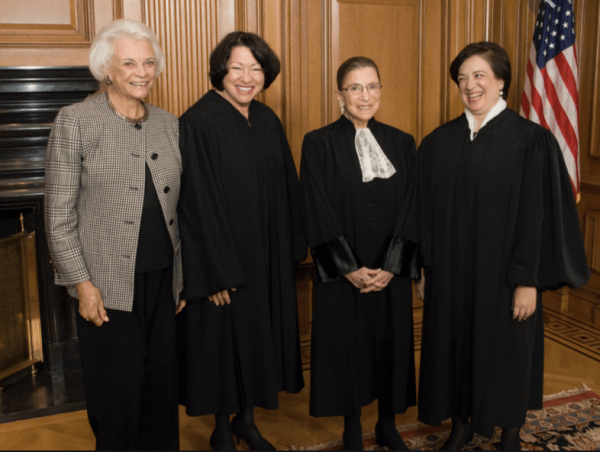Sandra Day O’Connor said, “It’s great to be the first, but you don’t want to be the last.”
We are all formed by our families, but that formation is rarely as publicly evident as with Sandra Day O’Connor. She learned independence from her rancher father. By the age of seven, she could drive and by eight she could competently fire a rifle and ride a horse. Her mother, a perfect lady, taught her graciousness; and her grandmother, with whom she lived while attending school, had a fierce confidence in Sandra’s abilities, encouraging her never to accept defeat.
O’Connor majored in economics at Stanford University so that she could manage her father’s ranch. She received her degree magna cum laude, but by then the family ranch was engaged in a legal dispute that peaked her interest in law. At Stanford Law School, although she was one of only five women in her class, she served on the Stanford Law Review, was accepted into the legal honor society, and completed her studies in two years instead of three. In spite of her acumen, she could not find a position as a lawyer. The only law firm to consider her offered her a secretarial position. Not accepting defeat, she went to the public sector in California and became deputy county attorney for San Mateo County.
Although she had dated William Rehnquist (later to serve on the Supreme Court), she married another classmate and followed him to Germany. At this point her early married life followed the pattern of many women. She followed her husband, worked where she could find employment, took time out to raise her children, and was active in charitable work. Even when her children were older, she set up a private law firm so that she could set her schedule and devote time to her family.
When she could work longer hours, she returned to public service in Arizona, serving as an assistant state attorney general. The governor appointed her to the state senate when another senator vacated his seat, and she ran successfully for two more terms. She became majority leader, the first woman in the United States to serve in this position.
She then ran for a judgeship on the Maricopa County Superior Court. Republicans urged her to run for governor several years later, but she did not. The Democratic winner nominated O’Connor to the Arizona Court of Appeals and two years later, President Reagan, in order to fulfill a campaign promise, nominated her to the Supreme Court.
Initially both liberals and conservatives objected to her nomination. Liberals knew she had worked to reinstate the death penalty in Arizona and conservatives knew that, in spite of her own views, she supported a woman’s right to choose. In the end the Senate approved her unanimously. Her record on the court is conservative, but she also protected affirmative action and refused to overturn Roe v. Wade.
The woman who had a bobcat as a pet when she was a girl, charmed Washington. When she retired to care for her husband, President Bush supposedly said, “For an old ranching girl, you turned out pretty good.”
LEARN MORE:
Two Biographies: http://www.oyez.org/justices/sandra_day_oconnor and http://www.biography.com/people/sandra-day-oconnor-9426834
From the National Archives: http://www.archives.gov/legislative/features/oconnor.html
The Washington Post on O’Connor’s resignation: http://www.washingtonpost.com/wp-dyn/content/article/2005/07/01/AR2005070100653.html
A Wonderful Perspective on O’Connor’s influence: http://www.huffingtonpost.com/meg-waite-clayton/supreme-court-gender_b_891804.html
QUESTION OF THE WEEK:
Sandra Day O’Connor’s grandmother had extraordinary faith in her. Was there anyone in your family who supported you completely?


Trackbacks/Pingbacks